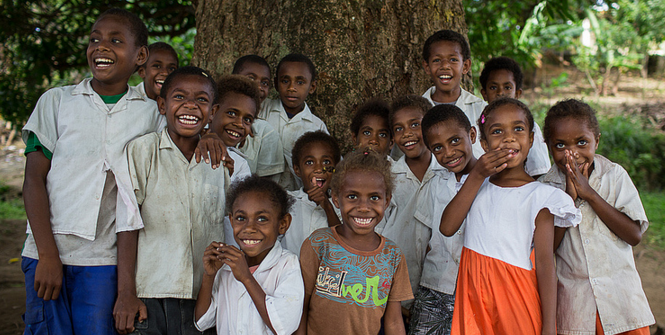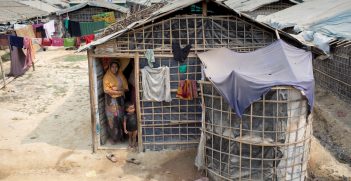The 2030 Agenda for Sustainable Development: Too Important to Fail

The funding gap between the increasing global aid demand and available resources has increased to USD$15 billion. This gap must be met in order to provide much needed relief.
For the past fifteen years, 189 United Nations member countries and international organisations have been dedicated to achieving a set of eight Millennium Development Goals (MDGs). The aims of the MDGs spanned from eradicating extreme poverty and hunger to developing a global partnership for development by the target year of 2015. While there have been varied outcomes – including positive as well as extremely negative valuations – the general consensus is that the results have been uneven and limited. Additionally, the statistical data has been significantly skewed by the economic expansion of China and India.
The 2030 Agenda for Sustainable Development, also known as the Sustainable Development Goals (SDGs) were initiated in September 2015 and focus on both developing and developed countries. They also encompass broader topics of environmental sustainability, social inclusion and economic development as well as important aspects related to peace, justice and governance. However, if the SDGs are to achieve the success that their predecessors could not, a prudent review is required to avoid the mistakes that led to the failure of the MDGs. As 17 ambitious SDGs have now been set, there can be no delay in devising careful measures to overcome obstacles and ensure a successful delivery of the 2030 Agenda for Sustainable Development.
Meeting the Financial Gap
The UN’s recent report of a USD $15 billion funding gap is one such obstacle that could significantly derail the Post-2015 Development Agenda. This gap indicates that there is a real possibility of the Agenda meeting the same fate as the MDGs: skewed achievements and only partial progress.
In order to resolve the financial gap, donor countries must be encouraged to mobilise financial resources for global humanitarian needs. It is unfortunate, however, that only five OECD donor countries (Sweden, the Netherlands, Norway, Denmark and Luxemburg) have consistently met the 45-year-old UN aid spending target of 0.7 percent of Gross National Income (GNI) in official development assistance (ODA). The Netherlands fell short in 2013 due to overall aid budget cuts and the United Kingdom and the United Arab Emirates only recently joined the benevolent donor group. In the meantime, Australian aid is expected to fall to 0.22 percent of GNI between 2017 and 2018 and other countries like the United States, Japan, Korea and Spain give less than 0.2 percent in aid.
Multi-bi and multilateral aid, including South-South Cooperation and wealth funds, need to be promoted in addition to bilateral ODA. China’s recent provision of humanitarian assistance and implementation of loan programmes in Africa and the Middle East are an example of the positive influence South-South Cooperation can have on developing countries in spite of defects in certain approaches and follow-up processes. Aid practitioners have also stressed the significance of business, innovative investments and partnerships between the media, the private sector and humanitarian organisations in raising funds.
Enhancing Aid Effectiveness
As declared by India’s new Permanent Representative to the UN, Ambassador Syed Akbaruddin, the priorities and needs of the Least Developed Countries (LDCs) should come first. Considering the 125 million people who are in dire need of humanitarian assistance, the focus of efforts should be on improving “aid effectiveness” for these countries.
Achieving a high level of aid effectiveness is dependent on two key factors: national ownership of the Agenda as well as avoiding a duplication of agendas.
Out of the five central pillars endorsed by the Paris Declaration on Aid Effectiveness in 2005 – ownership, alignment, harmonisation, managing for results and mutual accountability – national ownership is a pillar that has been overlooked by decision-makers. The 2030 agenda, while it has opened discussion to the public, is still predominantly determined by leaders of countries and international organisations, leaving the voices of local communities unheard. The targets and goals of the 2030 agenda can be accomplished only by successfully accommodating recipients’ interests and local demands through equitable and comprehensive measures.
The UN launched the Delivering as One (DaO) initiative in 2010 to solve the problem of duplication in aid programmes and projects. The initiative is comprised of the UN Development Assistance Framework (UNDAF) and the United Nations Country Team (UNCT) which promote collective action within the UN system for national development priorities. However, countries must go beyond the One-UN initiative and collaborate with stakeholders entering into the field of development in order to avoid overlapping mandates and maximise efficiency.
The 2030 Agenda for Sustainable Development represents a new way forward in the international community’s resolution to ‘leave no one behind’. Appointing MasterChefs and celebrities as UN Ambassadors and eminent advocates is not enough to ensure the success of the development agenda which, as the UN Secretary-General Ban described, is ‘too important to fail’. It requires substantial reforms, new sources of funding and, most importantly, the determination to make bold decisions to resolve the giant funding gap and enhance aid effectiveness.
Jiye Sarah Kim is a Masters Candidate in International Area Studies at the Graduate School of International Studies, Seoul National University and a current intern at the Australian Institute of International Affairs’ National Office. This article may be republished under a Creative Commons License.





